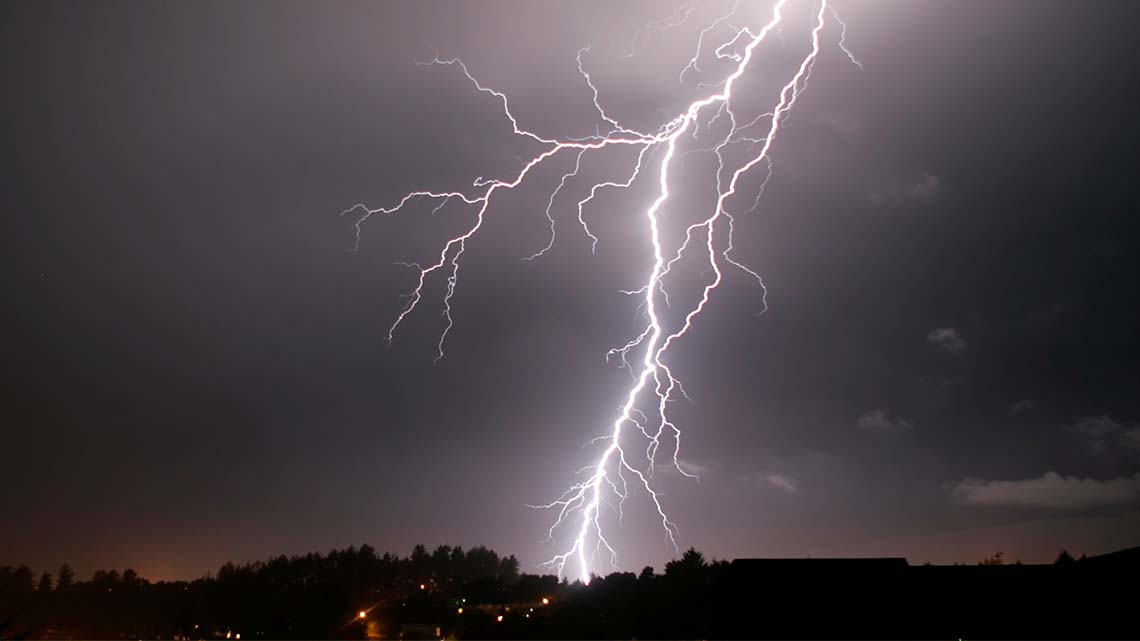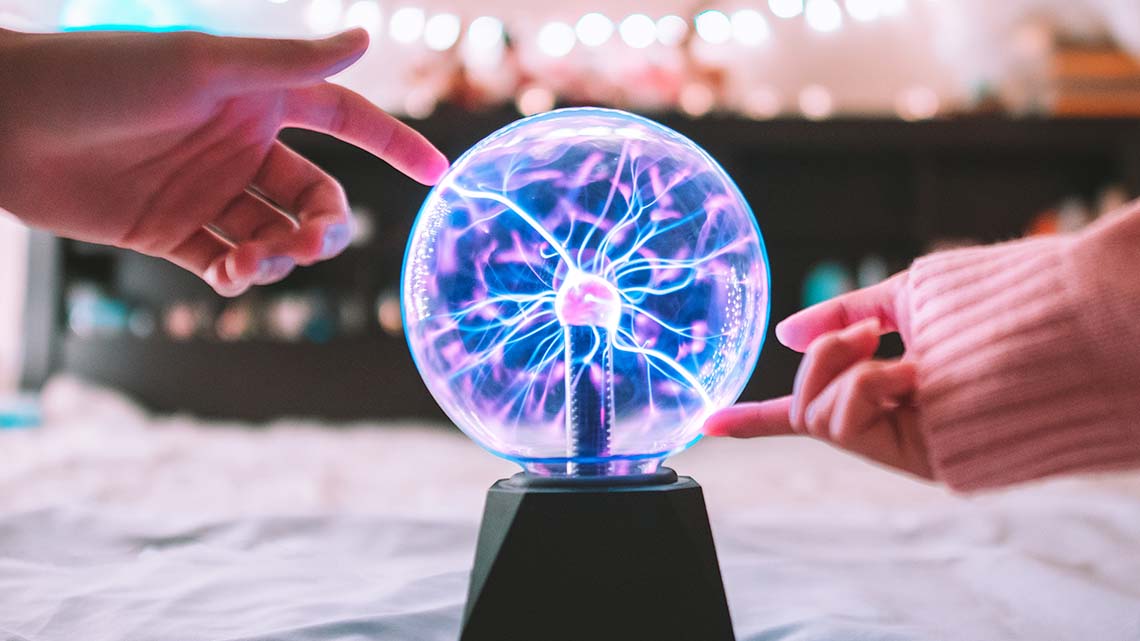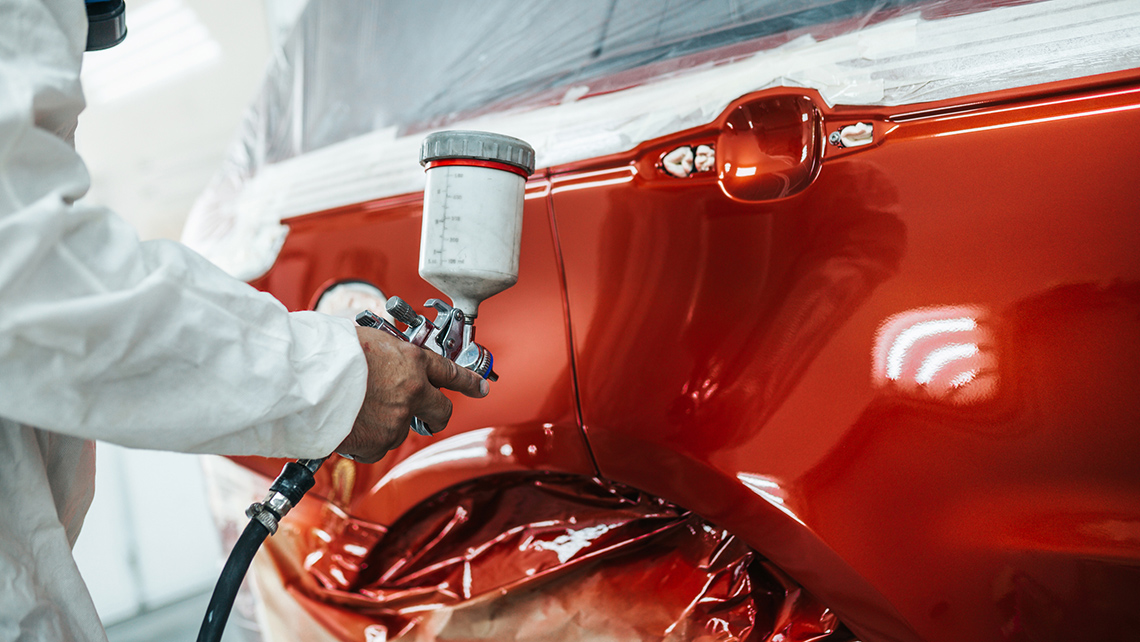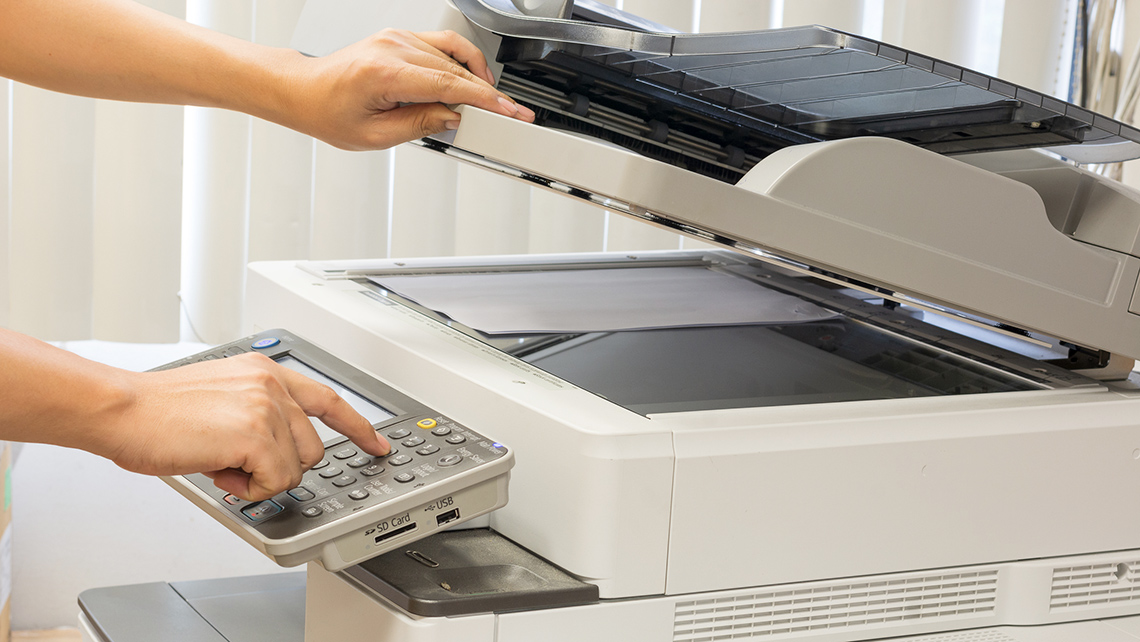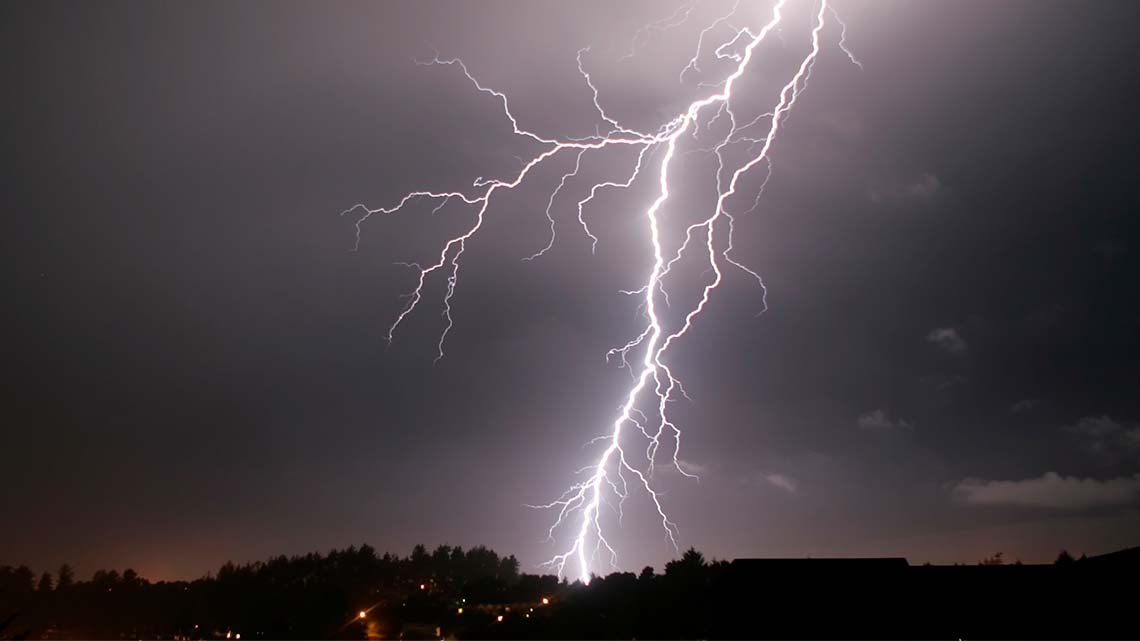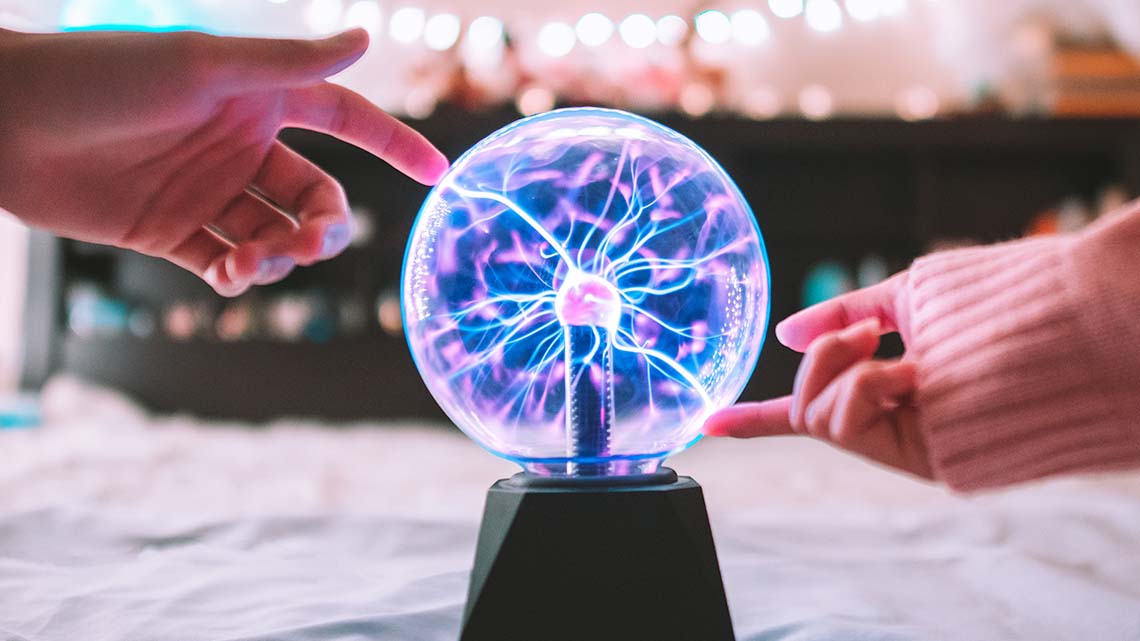Minds On
Similarities and differences
Let’s explore the following images.
Brainstorm
Brainstorm
After exploring the images, record a few of the similarities and differences that you notice between the images.
Then, brainstorm what you think causes these phenomena to happen.
Complete the Similarities and Differences Activity in your notebook or using the following fillable and printable document. If you would like, you can use speech-to-text or audio recording tools to record your thoughts.
| Similarities | Differences |
|---|---|
| Brainstorm: What do you think causes these phenomena to happen? | |
Press the ‘Activity’ button to access Similarities and Differences Activity.
What observations were you able to make? Did you notice that the explored images were all a result of static electricity?
What is static electricity?
Press ‘Let’s Check!’ to access the definition.
Static electricity is the result of an imbalance between positive and negative charges. It is a type of electricity where objects with the same charge repel each other.
Let’s continue to explore static electricity throughout this learning activity!
Action
Static electricity

This is an example of static electricity with two balloons. One balloon with a negative charge is touching a wall. The negative charges on the balloon are attracting the positive charges on the wall. Another balloon with positive charges is far away from the wall and the previous balloon. Objects with the same charges repel each other.
Everything is made of matter.
All matter is made of atoms. These atoms are made of protons that carry a positive charge (+), neutrons that do not have a charge, and electrons that carry a negative charge (−).
The electrons can move around easily, but the protons cannot move.
Static electricity happens when there is an imbalance of charges. One object comes close to another and pulls away electrons. The object ends up with too many negative electrons. It becomes negatively charged.
The other object ends up with more protons and it becomes positively charged. Materials with the same charges move away from each other and materials with opposite charges are attracted to each other.
Real-world applications
Static electricity is incredibly cool to explore, but it also has several uses or applications in the real world.
For example, many scientists and engineers have figured out how to use static energy to accomplish different tasks.
Check out the following images, and think about how static electricity might be used in each example.
Try It
Your turn!
The principles of static electricity can be used to address several real-world problems.
Positive and negative charges are applied to different materials. Explore the following examples of how static electricity can be used to prevent air pollution, create photocopies, and paint cars.
You may also conduct your own research about ways static electricity is used in machinery, to prevent pollution and to create products. If you are conducting your own research, be sure to follow safety guidelines.
Press ‘Hint’ to access details about conducting a safe internet research.
It is important to use reliable sources so that you can put together correct information about your topic. Ask a trusted adult or a peer for help if you are uncertain about a specific website.
Consider the following questions to ask when you are doing your reliability check:
- Is the information current?
- Does the site provide detailed information?
- Who is providing the information? What is their education and/or work experience?
Websites ending with .com, .org, and .net can be purchased and used by any person. Be careful when using these websites and ask yourself if these websites are credible or have bias. The ending .org is usually used by non-profit organizations, which may have an agenda of persuasion rather than education.
Websites ending in .edu are reserved for colleges and universities. Canadian websites have a .ca ending. It is important to consider using credible Canadian websites for research when possible!
You may use the following organizer while conducting your research or exploring the following tabs on how static electricity can be used to prevent air pollution, create photocopies, and paint cars.
Complete the Research Organizer in your notebook or using the following fillable and printable document. If you would like, you can use speech-to-text or audio recording tools to record your thoughts.
| Issue | How is this issue addressed using the principle of static energy? |
|---|---|
| Air pollution | |
| Photocopying images | |
| Automotive painting |
Press the ‘Activity’ button to access Research Organizer.
Press the following tabs to access examples of real-world applications of static electricity.

Electrostatic precipitator
Many companies use an electrostatic precipitator (ESP) to help prevent air pollution. This type of device uses static energy to pull smoke particles from the air.
First, the smoke particles pick up a negative charge.
Next, smoke particles are attracted to the positively charged collecting plates.
The collecting plates are cleaned to remove smoke particles. Then, the cycle starts again.

Photocopier
Photocopy machines work by using static electricity.
A positive charge is applied to the photocopy plate.
Next, the paper is placed over the plate. Then, light shines on the paper, which projects the image on the drum of the photocopier. The drum is coated so that it can conduct electricity when the light shines on it.
The toner is a powder that is negatively charged. It is attracted to the parts of the drum where the image is projected. The toner sticks to create a copy of the image on the drum. The drum turns and rolls against a piece of copy paper. Then, the paper is heated to make the toner stick to it.

Paint spray
Static electricity is used in auto shops as a method to paint cars.
Paint is given a negative charge and the body of the car is given a positive charge. Next, the negatively charged paint is sprayed across the car. The paint is attracted to the positive surface of the car.
This helps painters to create a full, smooth, and even coat of paint. It also helps painters cover small details that would otherwise be difficult to reach.
Become an engineer
How else might an engineer use static electricity for real-world applications?
Imagine you are an engineer.
You are tasked with creating a tool that uses static electricity to address a real-world issue.
Consider the following:
- the examples you have explored and/or researched
- How might this tool use the principles of static electricity?
- How might you design a tool that could be used in your own space or community?
You may use the following Engineering Design Process to design your tool. Follow the steps Ask, Research, Imagine, and Plan.
Explore this video to learn about the steps of the Engineering Design Process.
Then, complete the Engineering Design Plan in your notebook or using the following fillable and printable document. If you would like, you can use speech-to-text or audio recording tools to record your thoughts.
| Problem | |
| Research notes | |
| Solution | |
| Materials needed | |
| Design |
Press the ‘Activity’ button to access Engineering Design Plan.
If possible, you may continue with the remaining steps:
- create
- test
- improve
Reflect on your process and record your thoughts in a notebook or using another method of your choice.
Who is the audience?

Consider the design you have created. How might you present your design to an audience?
Reflect and respond to the following questions:
- Who might you market this tool or device to? Why?
- How could you market it this tool? (i.e., Why this tool is useful and/or important?)
- How is static electricity incorporated in your design?
Record your thoughts in a notebook or another method of your choice.
Consolidation
Review your learning
In other words…
Let’s re-examine the following images and examples of static electricity from the Minds On section of this learning activity.
Then, choose one of the images, or another example of your choice, and explain in detail how the principles of static electricity apply. Try to use the words electrons and charge in your explanation.
Record your thoughts and ideas in a notebook or another method of your choice.
Reflection
As you read through these descriptions, which sentence best describes how you are feeling about your understanding of this learning activity? Press the button that is beside this sentence.
I feel…
Now, record your ideas using a voice recorder, speech-to-text, or writing tool.

